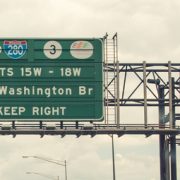While conservatives, led by their leader President Trump, are railing against the Democrats for their devotion to socialism, the current controversy over the Federal Reserve shows us, once again, that conservatives are as devoted to socialism as liberals (i.e., progressives) are.
As Richard Ebeling explains in his FFF ebook Monetary Central Planning and the State, the Federal Reserve is based on the concept of central planning, which is a core feature of socialism. Federal bureaucrats at the Fed plan, in a top-down, command-and-control fashion, the monetary policy that affects hundreds of millions of people, including determining the quantity of money in society.
It cannot be done, at least not without monetary and financial chaos and crises. Central planning is an inherently defective paradigm. Just ask anyone who lived in the Soviet Union. The reason is because the planners, no matter how brilliant they might be, simply lack the requisite knowledge to plan something as complex as money, especially in an economy as sophisticated as that of the United States.
Money, of course, serves as a way to facilitate trade. Given the inefficiencies of barter, people use money as an easy and efficient way to sell and acquire goods and services. In a market, people’s valuations are constantly changing, owing to constantly changing circumstances. Those constantly changing valuations apply to both the things that are being bought and sold and to the money that if being used to facilitate the exchanges.
There is no way that central planners can take all of those constantly changing valuations into account when doing their planning. The result is crisis and chaos. That’s why the U.S. has experienced a never-ending series of bubbles and bursting bubbles. It’s why the U.S. has had a constantly devaluing dollar ever since the Fed was established in 1913. It’s why gold and silver coins, which were the official money of the American people for more than a century, no longer circulate as money. It’s why there was the big stock-market crash in 1929, which led to the Great Depression.
The Federal Reserve has been and is the root cause of all this monetary chaos and crises. That’s what central planning does. That’s what any socialist system does.
So, what do conservatives and liberals say about all this? They both remain wedded to this socialist institution, notwithstanding the fact that it is inherently defective and has been so destructive to the liberty and well-being of the American people. They say that all the chaos and crises are the result of America’s “free-enterprise” system. They think the Fed is the solution to the woes that they feel are caused by “free enterprise.”
Consider President Trump. He wanted Herman Cain and Stephen Moore to serve on the Fed. Trump’s reason for appointing those two individuals? He was confident that they would keep interest rates “low,” which would ensure that the financial bubble that the Fed has been inflating since the last bubble burst in 2008 won’t burst before the 2020 presidential election. Trump has also been jawboning the Fed, which ostensibly is independent of the executive branch, into keeping rates low for the same reason — a bubbling economy will garner him votes.
Meanwhile, progressives are criticizing Trump for nominating Cain and Moore and for berating the Fed. For example, in yesterday’s New York Times former Obama Treasury official Steven Rattner has an op-ed entitled “Don’t Let Trump Mess With the Fed,” in which he takes Trump to task for interfering with the independence of the Fed. In the process, Rattner states, “Of course, the Fed doesn’t get it right. (It famously missed the dangers of the credit bubble in 2007.)”
Because Rattner, like Trump, is trapped within the central-planning box, he just doesn’t get that credit bubbles and other monetary chaos and crises are inherent to the Federal Reserve. He doesn’t understand that monetary central planning will never “get it right” because central planning can never “get it right.”
And that’s really the big problem with conservatives and progressives — their minds are so mired in statism that they can’t even conceive of the alternative — a free-market monetary system, one in which there is no monetary central planning — no monetary socialism — no Federal Reserve — a monetary system in which the state plays no role whatsoever — a system in which there is a total separation of money and the state.
The Austrian economist Friedrich Hayek called such a monetary system “the “denationalization of money.” In a free-market system, what would be used as money would be determined by people in the marketplace. The supply of money and the demand for money would be determined by market forces, just like everything else. Hayek pointed out that central planners suffer what he called a “fatal conceit” in convincing themselves that they can centrally plan complex economic and financial activities.
A genuine free-market monetary system would bring an end to the chaos and crises that are produced by monetary socialism. More important, it would be consistent with the principles of a free society, one where the government lacks the power to plunder and loot people through the debasement of currency.
Just don’t look to either conservatives or liberals for ending the Fed and bringing a free-market monetary system to America. Their minds are simply too mired in monetary socialism to enable them to break out of their statist box. To break out of that box and move toward liberty, people must look to libertarianism.













